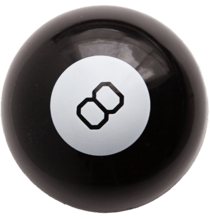
The Cyclonic Buyer Journey Series: How To Drive Awareness-Stage Leads
Now That Prospects Are Aware Your Products Or Services Might Represent A Better Way, How Do You Respond?
 You did it — you successfully disrupted your prospect’s status quo and they’re aware that you and your company exist. They are aware there might be different ways of doing what they do and that solutions like yours should be at least investigated. Your prospect has moved from Pre-Awareness to Awareness. Now what?
You did it — you successfully disrupted your prospect’s status quo and they’re aware that you and your company exist. They are aware there might be different ways of doing what they do and that solutions like yours should be at least investigated. Your prospect has moved from Pre-Awareness to Awareness. Now what?
While “now what” is a good place to start, you should be aware that some prospects are already in the Awareness Stage. They’re already looking for companies like yours, so while moving along those who came from Pre-Awareness, we’re also going to talk about getting your company on the radar for those already looking.
People in the Awareness Stage of the Cyclonic Buyer Journey™ are tuned into the issue or challenge. In case you haven’t noticed, we’re working hard to apply science (and behavioral science in particular) to our understanding of both marketing and sales, specifically as it relates to how and why people buy.
The Awareness Stage is driven primarily by your brain’s reticular activator. This is the part of the brain that stays on alert. Its job is to make you notice some things and ignore others. When you buy a new Audi and it then seems like the whole world drives Audis because you notice them everywhere, that is the reticular activator at work. If you want to learn more about that, click here for more details.
Your prospects are “open” or on alert for anything related to this issue, and you must take advantage of it. This is where marketing should shine.
Understanding How To Connect With People In The Awareness Stage
This is typically the stage that marketers are most familiar with, and it’s the stage where most marketers think their tactics start influencing a prospect’s buyer journey.
Most of the tactics discussed in this article should sound familiar to you, as they are generally the most frequently deployed.
What people don’t know is that those tactics need to be adjusted, configured or tweaked based on an understanding of your company’s unique prospect persona and their unique experience in their buyer journey.
This means that what the software company does to market their software in the Awareness Stage is likely going to be dramatically different than what the data center equipment manufacturer does and what the professional services consulting company does.
Your prospect’s journey within this stage should dictate how and what exactly you do, not a best practices article that talks about top-of-the-funnel marketing tactics or a template you find on the web for converting a suspect into a prospect.
The more you understand the questions, concerns and issues your prospects have in this early stage of their buyer journey, the better the results you’ll produce for your company.
Here’s an example: By understanding what keywords they’re searching (not the ones you want to rank for, but the ones they’re actually typing in), you can better position your website content to rank for your prospects.
Here’s another example: By understanding what questions your prospects have early in their buyer journey (which are different than the questions they have later in their journey), you can create website pages and educational content that answer those questions, better positioning you to be an educational source for their buyer journey.
Remember, you are still in the Awareness Stage, so your content, headlines, stories and high-level messages have to be good enough to grab someone’s attention. We’ll cover the Education Stage next, but right now these people are not active in their quest for information.
Right now, they are still casual observers, with only their reticular activation systems on watch. This is why your website has to be amazing. It’s why your prospects need to see you in five or six different places, like on a review site, on LinkedIn, on Google, in paid content, at an event, on another related website or associated with a piece of thought leadership content that gets shared with you.
They might have to see your brand consistently over a period for them to include you in their educational quest — the next stage of their journey.
What Mistakes To Avoid In The Awareness Stage
This is a common stage for marketers to be working in, so the mistakes are usually limited. But one of the biggest is hoping that people in the Awareness Stage will move all the way to the Decision Stage immediately.
You know what this looks like, because we’ve all seen it — websites with only one action button, like “contact us,” “schedule a call” or “ask for a proposal.” Your prospects are not ready to talk to you.
Giving them only the end of the buyer journey conversion option and expecting them to take it always produces sites with low conversion rates, sites that don’t generate leads or sites that generate leads the sales reps hate. If this sounds like your company, this might be an issue that needs fixing.
Another mistake is not properly nurturing anyone who does convert. I’ve seen companies throw away perfectly good leads because they’re not ready to buy today. The people in the Awareness Stage might be amazing leads, and not properly nurturing them through their buyer journey is a fast track to weak revenue cycle performance.
What Tactics To Use With Prospects In The Awareness Stage
Here are a handful of highly effective tactics designed specifically for the Awareness Stage. These tactics all have something in common: They’re designed for people who are starting to get to know you but need to know, like and trust you more before they’ll move forward with you.
- Organic search engine optimization: People in this stage might be searching for terms and phrases related to your business. You need to be found on all of the major search engines, and you do so by understanding exactly what words and phrases people are using in their searches.
- Paid AdWords on search engines: Some of these keywords and phrases are going to be difficult to rank for, either because the competitors have better content, have better sites or have been ranking for longer. To mitigate this situation, you could consider some pay-per-click (PPC) campaigns in the search engines. These get you visibility for selected keywords and phrases but require an appropriate budget to gain page-one visibility and then maintain those listings.
- Website design: People looking for companies like yours will eventually end up on your website, and you’ll have 10 seconds to get their attention, hold it and get them to take action. If your site doesn’t tell a compelling and disruptive story, and if it’s not well designed, you’ll be sending all of these people to your competitors’ sites.
- Website pillar pages (for search): Not only will pillar pages help you rank for keywords, but if you execute pillar pages properly, you’ll have highly educational pages designed specifically for people in the Awareness Stage of their buyer journey and you’ll deliver a remarkable experience at the same time.
- Conversion rate optimization (CRO): One of your goals for prospects in the Awareness Stage is to secure their contact information so you can nurture them while they progress through their buyer journey. Getting your website pages to convert or turning visitors into leads is a key tactic at this stage. CRO is something you should be looking at every single month. This includes looking at CTAs on the site, looking at landing page performance and looking at form completion data, then making adjustments to move these key metrics up and to the right.
- Visitor experience optimization on the website: CRO has to do with conversions, and visitor experience optimization includes making sure visitors are clicking where you want them to click, scrolling down the entire site, moving from page to page as you originally designed and then adjusting accordingly. Typically, this involves some heat-mapping software like Lucky Orange to give you the visitor data you need to make smart decisions.
- Content publication: People in the Awareness Stage need and want additional education to help them move along and make a smart decision. The content that you publish on your site, that you promote in your PPC ads and that you use to drive higher conversion rates needs to be targeted for the persona you’re planning on attracting and the questions they’re asking at this stage in their buyer journey. Sync that up correctly and you’ll drive more early-stage leads for your sales team.
- Social media marketing: Your prospects are asking questions about your company, substitute products or services and more. They are doing this on social sites like LinkedIn, Facebook and Twitter. This means you need to have a presence there, so you can tell your story, attract attention and drive prospects looking for services like yours back to your website.
- Blogging and guest blogging: Prospects are getting to know you during the Awareness Stage, and your company blog is an excellent (in fact, the best) place to share your thought leadership, to express your opinions and to show your prospects how innovative and forward-thinking your company is. The more you blog, the more opportunities you’ll have to educate prospects and, if you do your blog properly, convert those readers into leads.
- Email marketing: One of our goals is to influence and try to proactively move prospects along the Cyclonic Buyer Journey. Nothing will work better than email marketing and lead nurturing emails. If you strategically plan these out, they can be highly effective at providing additional content, collecting additional information and working leads through the buyer journey.
- Lead scoring: Also key when it comes to getting sales involved, you should be using lead scoring to know which early-stage prospects represent your best opportunities. These score metrics can also influence potential lead nurture campaign tracks and when to get sales involved.
That is not a comprehensive collection of tactics, but it’s a good start (and there might be some tactics from the Pre-Awareness Stage as discussed yesterday that you could include). In most cases, you might not be able or have the budget to execute all of the tactics outlined here, so choose wisely based on prioritization criteria. At Square 2 Marketing, we select the tactics that will provide the best results for the least amount of effort and work back from there.
What Metrics To Use To Measure Performance Of Awareness-Stage Tactics
While most marketers might not want to be accountable for quantitative performance, we’re encouraging everyone to agree to a set of performance metrics for every tactic, and those in the Awareness Stage are very important to measure. These also give you insights into the health of your pipeline and future revenue opportunities.
Here are a handful of potential metrics you can use to measure the effectiveness of your Awareness Stage tactical execution:
- Website visitors: You can look at unique visitors or total visitors, or you could even track sessions on your site. Regardless, these numbers give you a good indication of how many people are checking out your site, and you should be working hard to drive up these numbers month over month. One trick to this is looking at all sources of new visitors (not just Google), such as referral visitors, visitors from social sites, email-generated visitors, visitors from paid campaigns and even visitors who type in your URL. Optimizing all of these sources produces the best chance turn visitors into leads.
- Site-wide conversion rate: Speaking of leads, you’ll know how well your site does at converting visitors into new contacts by the site-wide and the page-specific conversion rates. This is an excellent Awareness Stage metric that does give you a general measure of how effective your site is at turning visitors into new contacts. Typically, sites should be in the 1% to 3% site-wide conversion rate range.
- Net new contacts added to the database: This is a metric that might need some manual calculating, but if you have 10,000 contacts in your CRM database this month and you have 11,500 next month, then you added 1,500 net new contacts as a result of marketing. These new contacts might not all be in the Awareness Stage, but usually new contacts are early in their buyer journey, giving you time to nurture them better than your competitors.
- Social reach, followers, connections and friends: Plenty of marketing experts downplay the social media metrics. Generally, I’m one of them, but if you’re looking to measure the health of your Awareness Stage marketing, then the number of people connected to your social sites does give you a good indication.
- Conversion rate of visitors to sales opportunities: You’ve probably read about something called vanity metrics. These are metrics that make you feel good but don’t really contribute to revenue growth. The conversion rate of visitors to sales opportunities (not new contacts) is not a vanity metric, and it’s one you should be very intimate with. This number shows you exactly how your marketing is filling up the top of your sales team’s revenue cycle (or funnel, if you’re still using this old terminology).
- Visitors from organic search: We talked about sources of new visitors to your website, but by looking specifically at visitors coming from organic searches on Google, Yahoo! and Bing, you’ll see exactly how visible you are to people actively searching for companies like yours. This is an excellent metric for the Awareness Stage.
- Sales-qualified leads from organic search: Taking this one step further, visitors from organic search are great to track, but sales-qualified leads from organic search are even better. We’re not looking for a conversion rate with this metric but rather the actual number of sales-qualified leads coming from Google, Yahoo! and Bing-related searches. If this is going up month over month, your revenue will likely follow.
While many more metrics are associated with the tactics we’ve discussed here, these are some of the metrics that provide higher, more strategic insight into the performance of your Awareness Stage tactics, and you can apply them across several tactics highlighted here.
What Technology Makes This Easier?
The technology available to make the marketing execution around the Awareness Stage easier is just as rich and challenging to evaluate as the technology in the Pre-Awareness Stage.
Here is a partial list of technologies that you can deploy for your execution of Awareness Campaign tactics:
- SEMrush – for keyword research, site-ranking performance and technical SEO
- Moz – similar, great for local SEO
- Unbounce – for conversion rate optimization and landing pages
- Bizible – for performance insights at enterprise-level companies
- Full Circle Insights – improved performance insights and reporting
- BrightFunnel – now part of the Terminus solution, excellent for attribution
Regardless of what your Awareness tech stack looks like, it’s going to need to run on top of solid foundational technology like HubSpot, Marketo and/or Salesforce. Marketing automation and CRM software are required for any of the campaign tactics identified above. This means the stage-specific technologies need to be integrated with any of your platform tech options.
Thinking about your revenue generation based on your prospects’ buyer journey stage instead of the tactics you execute is a dramatic change. As marketers, we’ve historically organized around the tactics and not the buyer journey.
By smashing the funnel and applying a new map (the Cyclonic Buyer Journey map), we’re encouraging people to start building more buyer-centric marketing and sales strategies, executing tactics more thoughtfully, tracking the performance of everything and using technology to automate and analyze your results.
The business outcomes? Month-over-month revenue growth and consistent, scalable, repeatable and predictable revenue generation machines. Give it a try, it works! That’s why we guarantee results for our clients.

CEO and Chief Revenue Scientist
Mike Lieberman, CEO and Chief Revenue Scientist
Eliminate Hit-or-Miss Marketing Moves
Get advice, tips, tools and guidance to generate more leads for your company in this weekly email newsletter.



Eliminate Hit-or-Miss Marketing Moves
Get advice, tips, tools and guidance to generate more leads for your company in this weekly email newsletter.













